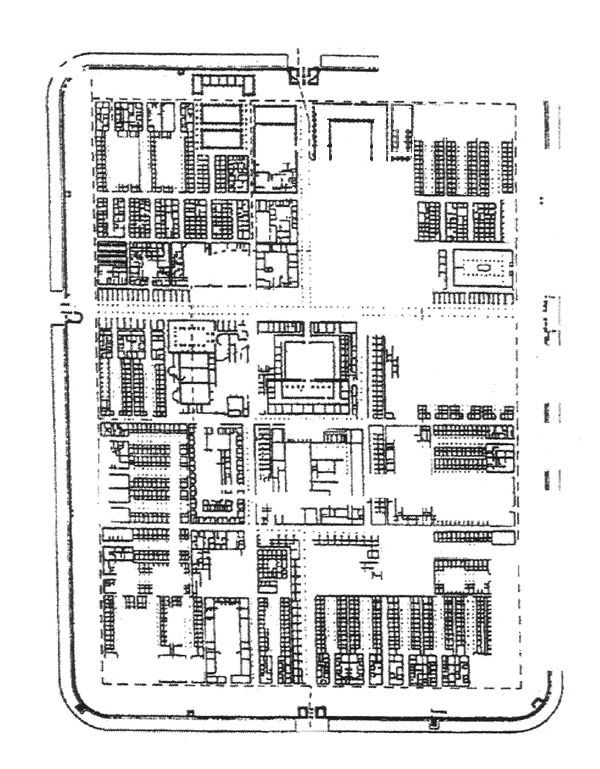1.2 The discovery
The first signs of Roman activities in the region of Neuss were discovered by Constantin Koenen in Grimlinghausen at the mouth of the river Erft in 1877. *5) From 1886 to 1903 excavations were carried out under the leadership of Constantin Koenen and foundation rests of a complete Roman legionary fortress were discovered, measured and documented. This discovery at the mouth of the river Erft was a sensation and unparalleled at that time, because up to then no legionary fortress had been excavated to that degree. The CASTRUM NOVAESIUM with its grand and comfortable buildings had been unique in this province at that time.

|
Recording of all the excavated foundation rests of the second stone-phase
By Constantin Koenen Thanks to the recording and descriptions of the excavation by Constantin Koenen one could have had erected a "reproduction" of the fortress at Neuss. But as the area is completely built up, the only option is: a reduced, accurate scale reconstruction. 5*) Hans Seeling, Constantin Koenen - Leben und Werk des Archäologen / S 35 |